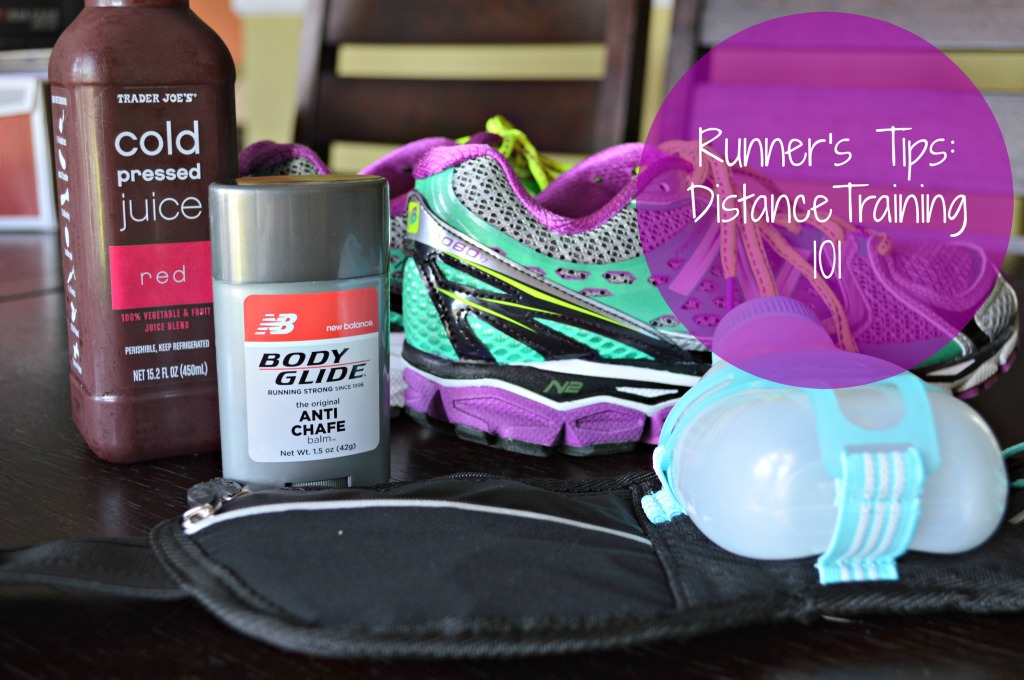Today I went on my last long run before the half marathon next weekend. I thought it was about time I gave you an update and a few tips to help you along your way.
Here’s the deal: training was going awesome. I looked forward to every run, no matter what day, the weather, or my schedule. Then I went out of town – my schedule was a little off for about 2 weeks. I didn’t do my long runs, and I was not excited to get back into it.
But then last week I decided to go for a long run. It was a 6 mile day, but a day I had time to go longer, I just wasn’t really feeling it – at all. I made a promise, plan on 6, go for at least 4, and see what happens. At the end of it, I logged a solid 10 miles! It felt great to be back at it. The key was to focus on staying true to how I felt – giving myself the option to see how it went and not stress about it.
And that’s how it’s been for most of my runs during this training. When I trained a few years ago, I got so burnt out, that I didn’t run regularly for about 3 years (maybe 5-10 times total). This time, I planned on pushing myself just enough but mostly just enjoying it – which I have. I have also decided to ease up a bit in the last few weeks. If I missed a mid-mileage run, no biggie. If I decided to go for a hike instead, awesome.
On today’s run, the temps were up, but it felt great. I was sore and tired, but felt I could have gone a bit further if needed. I felt absolutely prepared to run the half marathon, and I want to help you get there too.
Some of you might be training now, training soon, or running a race next week. You can use these few tips to help you up your game and make it across the finish line with confidence and a smile!
Running Tips for Long Distance Training:
1) Start Slow: During training, and especially on race day, pace yourself. You have a long way to go, and you can get there, but only if you take time to build up your pace. If you start off to fast, you might run out of energy early on or even set yourself up for injury. Stick to a pace slower than what you intend and gain speed as you go.
2) Shoes: Get Fitted, for real – this is the most important advice I was given. Head to a specialty shop and let them test out your stride, or at the very least have them check your foot for pronation. A good specialist or retailer should be able to listen to your needs, check your foot, and give you just the shoe you need (without overselling you) for your training, your foot, and your mileage.
3) Fuel and Gear: Going for long runs requires a little bit of preparation. You’ll need to bring water, perhaps some energy bites, and the gear to store it. You can bring a water bottle along and simply hold it (but that sounds pretty awful doesn’t it?) or you can find some sort of attachment. Some bottles have straps around your hand that will hold your keys, snacks, etc. You can also find a belt that you can wear around your waist (my preferred method) that you can store the rest of your stuff in as well.
4)Body Glide: Before you run, you might need to prepare for a big possibly TMI issue: chafing and blisters. If you wear shorts or tank tops, you might notice some rubbing or blisters from skin-to-skin contact. You can use deodorant, powder, or body glide – which is my favorite to sue and rubs on like a deodorant.
5) Entertain Yourself: When you head out for a long run, you are likely to need some distractions and entertainment along the way. Prepare with a playlist or music that either matches your rhythm or keeps you listening. You can also try audio books and podcasts to listen to while you run – I prefer music, but I know many people that use this method instead. If you like running with people, encourage a friend to train with you or come out for at least part of your run.
6)Prepare Your Route: Plan ahead for where you want to run – this way you’ll know you are getting your mileage in and you won’t get lost. You can use a GPS, map it out with your car, or use the site mapmyrun.com. Do this for at least the first few long runs, until you get more familiar with the area and can figure out where to go and for how long.
7)Listen to Your Body, Not Your Brain: When you run, you are likely to hit a wall at some point. You’ll be tired, sore, and ready to turn in, and some of this will be in your head. See if it is really or body that needs a break or just a mental break. Fuel up, hydrate, and breathe. Then see if you need to take a break. If you do, go for it and walk a bit. Then get right back into it.
8)Count Calories: I hate doing this. I am not one that tells people to follow a calorie (or any other) counting diet, but when training, it might be necessary. When you run for hours at a time, you burn a lot of calories and a lot of fuel. Your body needs you to consume more to replenish and repair. Counting calories helps you to do 2 things: not overeat and not undereat. Many times, we run and then overcompensate for the miles we’ve run. This can lead to weight gain while training. We also undereat, which can leave you tired, but also can push you into starvation mode, messing with your bodily systems and cause you to gain weight. Use a calorie tracker app, site (myfitnesspal.com), or a fitness device, especially on those long run days.
9)Warm up/Stretch Down: Two important things here – warm up first, stretch to cool down later. Warming up can help you prevent injury by warming your muscles before you start. Stretching after your run helps to release tension, lengthen your muscles back out, and loosens your body up. Both are very important when running any distance. *It is important to NOT stretch before you run. Stretching lengthens and loosens your muscles, which you definitely don’t want before you need to use them. Instead, warm up by walking or doing a few sun salutations to heat your muscles and warm you up.
10)Recovery Baths: Cold and Warm – this is the second most important advice I was given. Recovery baths can help you prevent injury caused by inflammation and tight muscles. The key is to know which one to do first. Cold then Hot is the way to go. Cold Baths (just the cold water, absolutely no warm) help to decrease the inflammation that builds around your muscles and joints. Heat will only make this worse to start (like how you first ice an injury). With your clothing on, grab a warm drink, a magazine or show, and sit in a cold bath for at least 5 minutes. Afterward, jump in hot shower or switch to a hot bath to prevent soreness. You can also add epsom salts to the tub to reduce lactic acid build up. I know this sounds a bit crazy, but I swear by this and when I don’t do it, I can feel the difference.
What are your biggest obstacles (besides the actual running) in your training? What tips have helped you the most?
Peace and Love,
Jessi

